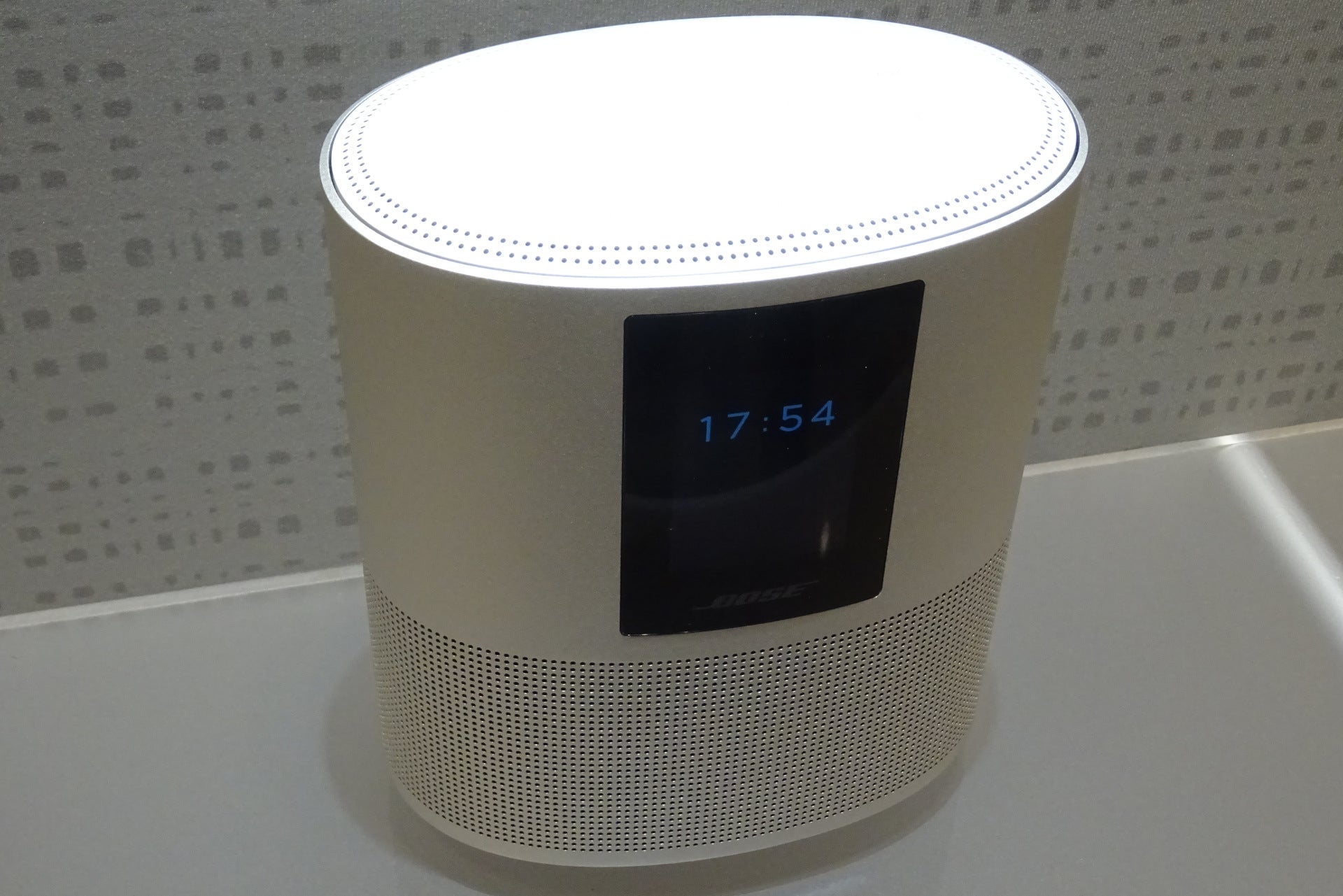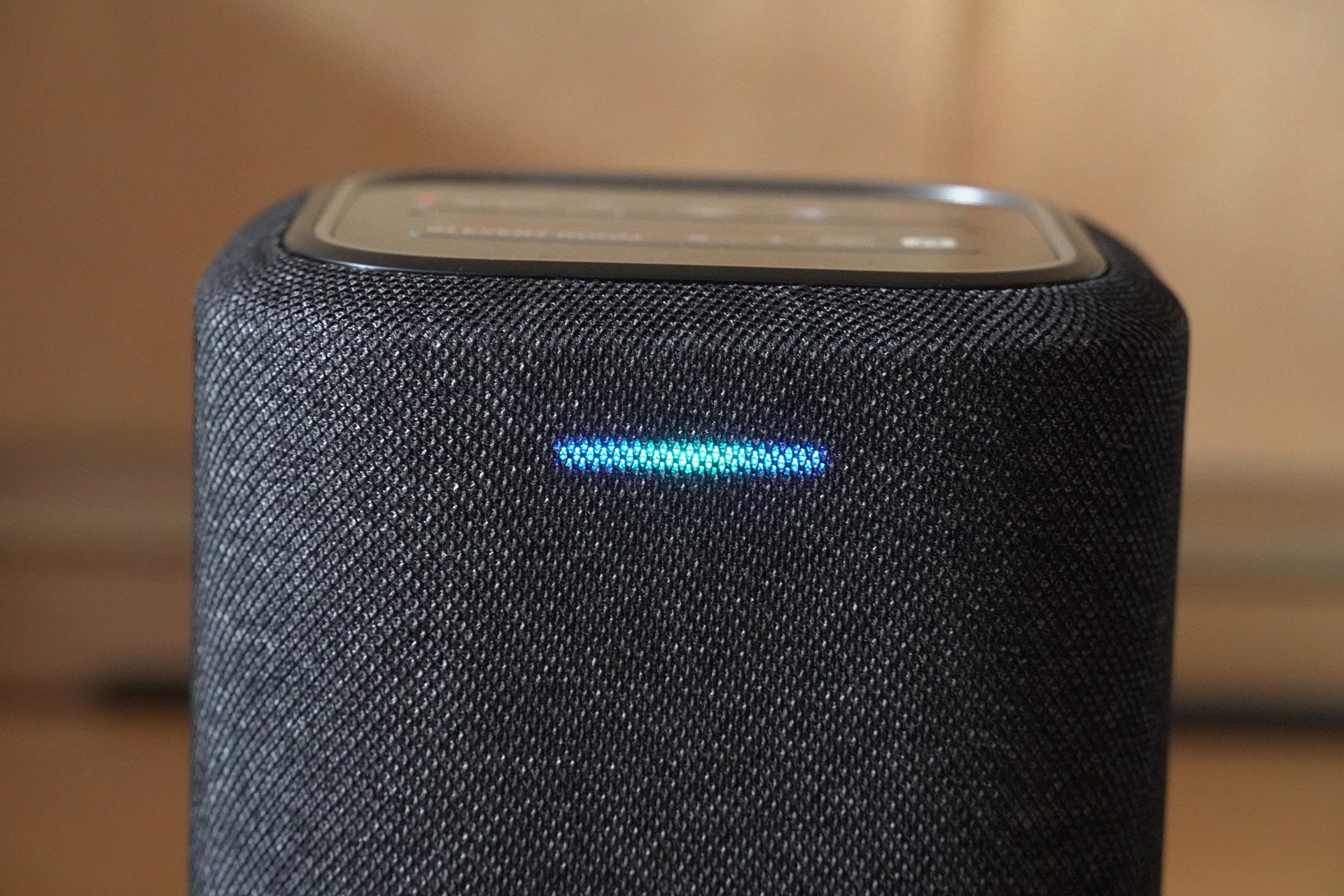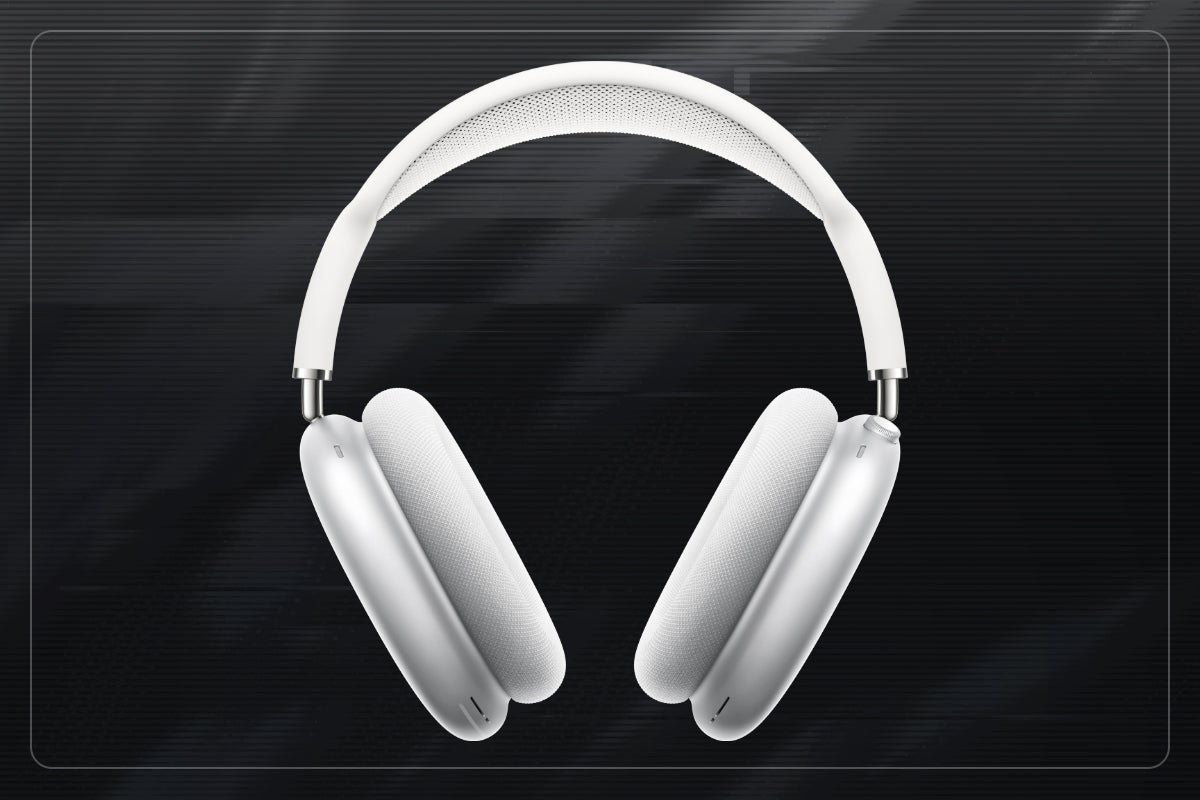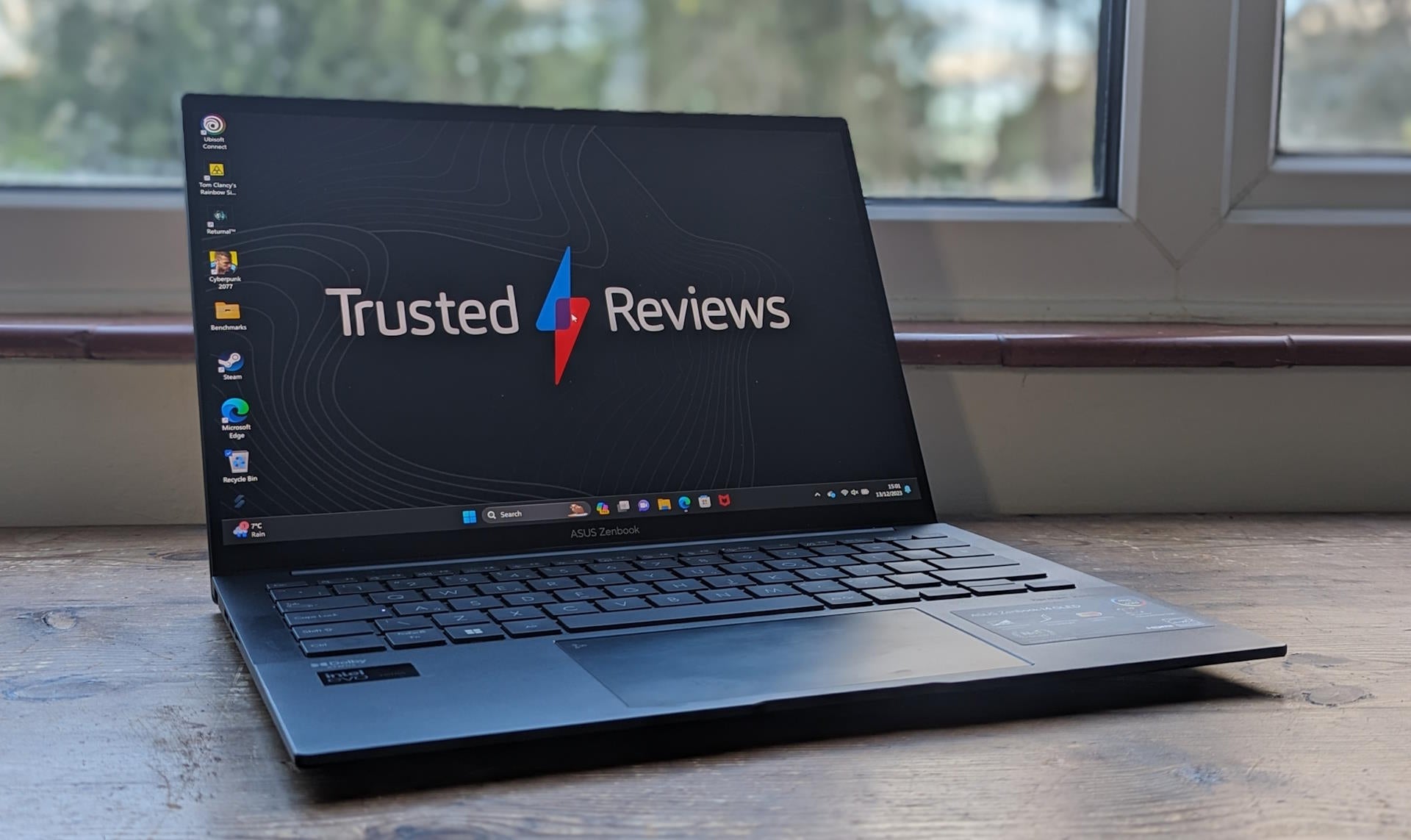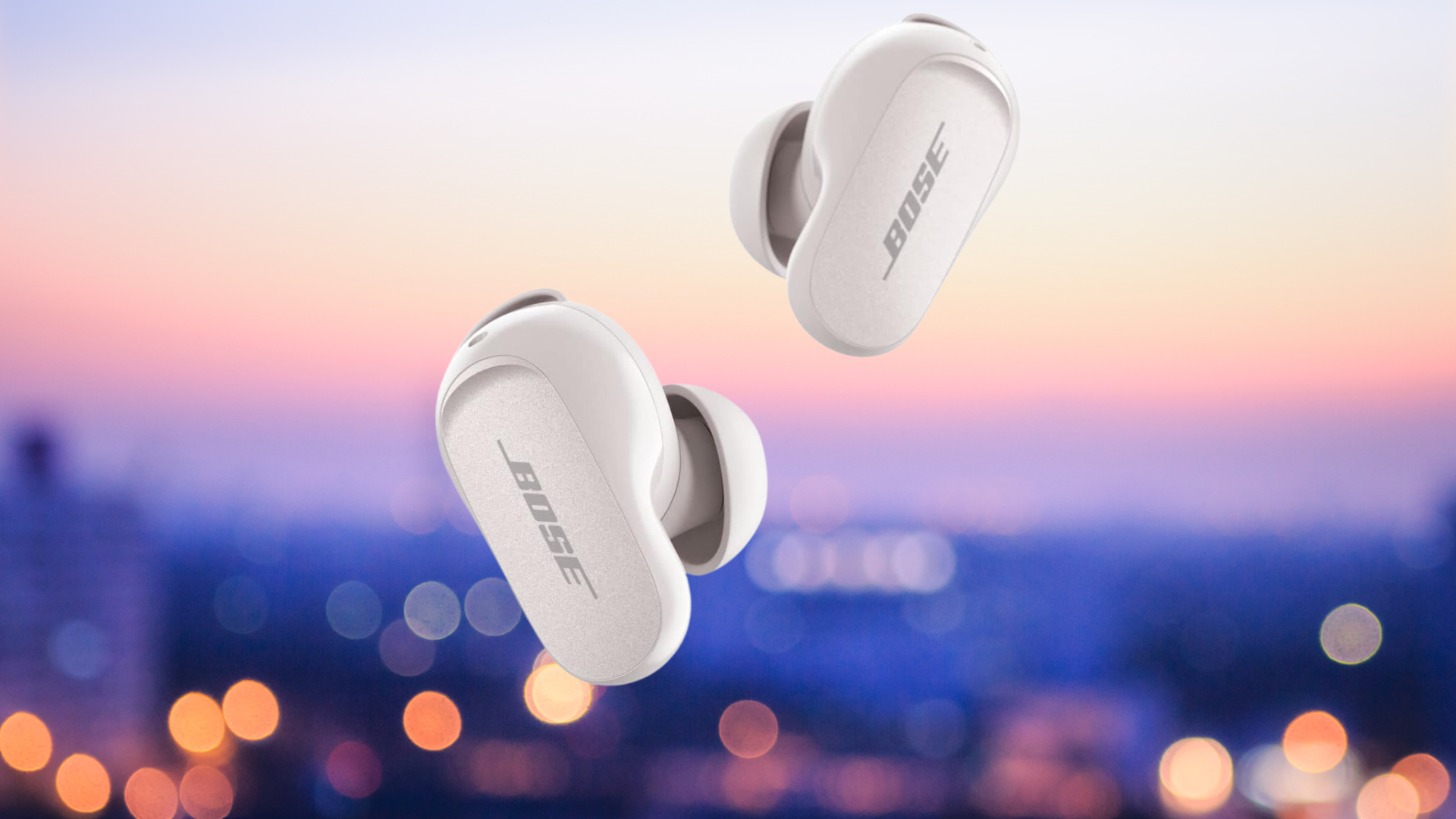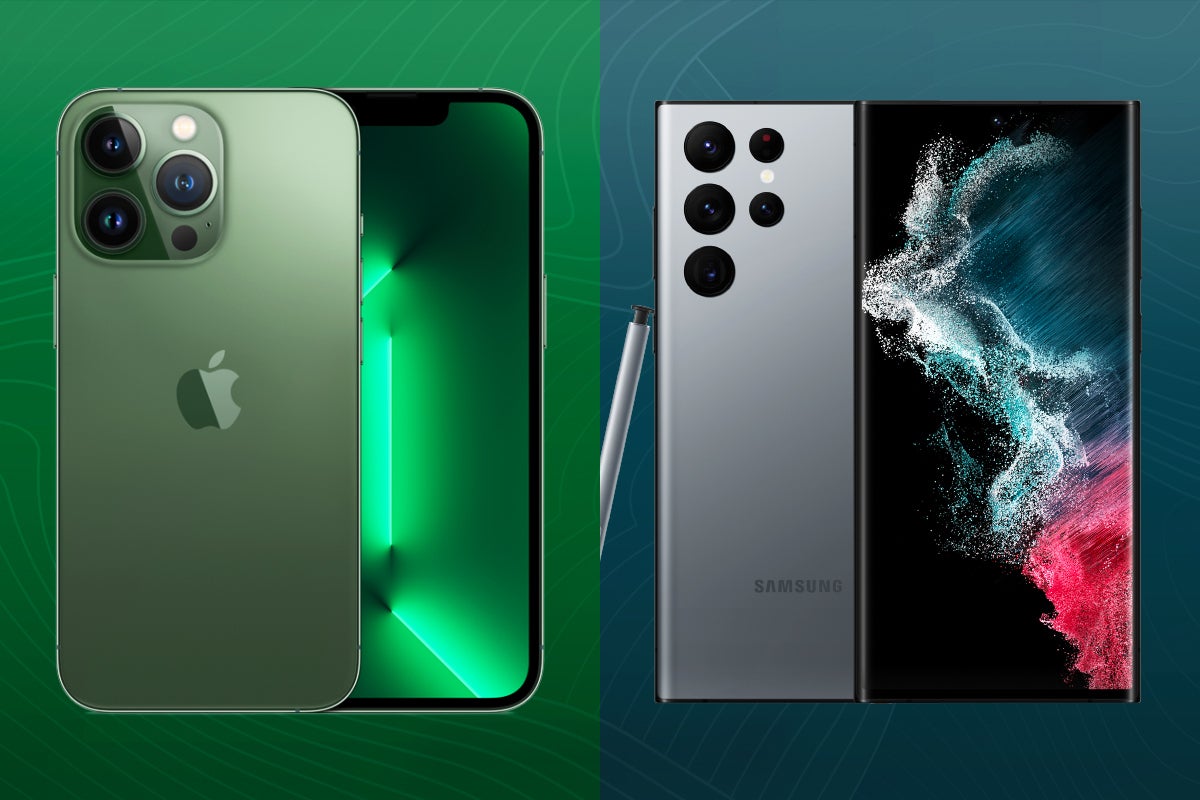Best Smart Speakers 2024: Our top voice assistant speakers

Smart speakers are now more popular than ever, but with so many options available it can be tricky to know which ones are worth your cash.
While Amazon initially paved the way for the smart speaker revolution with the humble Amazon Echo, released way back in 2014, the company has since seen some stiff competition from the likes of Google and Apple, and that’s without mentioning third-party speakers that utilise Amazon’s Alexa voice assistant.
What this means is that there’s now an abundance of choice when it comes to adding a new smart speaker to your smart home ecosystem. For instance, if you use an iPhone 14 or utilise Apple’s HomeKit ecosystem then you might be better paired with an Apple HomePod.
Alternatively, those who are planted firmly in camp Google with a Pixel 7 or Pixel 7 Pro, you’ll likely feel right at home with one of Google’s many Nest speakers. Still, even though there are some obvious pairings across different pieces of tech, there are still several intricacies to be aware of that might sway your decision completely.
For instance, the ‘smart’ aspect of these speakers is only one facet, as the sound quality and design vary greatly from one speaker to another. There isn’t really a one-size-fits-all option, and there’s sure to be something on this list that speaks to you more than any other.
If you’re intrigued to know what other devices are available in the world of audio, you can also check out our round-ups for the best Bluetooth speakers, best outdoor speakers and best multi-room speakers.
At a glance
- Best sounding smart speaker: Bowers & Wilkins Zeppelin – check price
- Best Apple smart speaker: Apple HomePod Mini – check price
- Best Google smart speaker: Audio Pro G10 – check price
- Best Alexa smart speaker: Amazon Echo (4th Gen) – check price
- Best sounding Apple smart speaker: Apple HomePod 2 – check price
- Best multi-room smart speaker: Sonos One (Gen 2) – check price
- Best budget smart speaker: Amazon Echo Dot (5th Gen) – check price
- Best premium smart speaker: B&O Beosound Balance – check price
How we test
We play a lot of music, and we play it loud. We make sure that the smart features actually work, as why else would you buy it?
We test functionality with all the listed smart speakers, which means we regularly have conversations with the likes of Alexa, Google Assistant and Siri. How responsive are they? And are the features wide-ranging or limited in scope? We take all of this into account.
Of course, it always comes back to the music. Speakers are tested by reviewers who have a love of music, a knowledge of sound quality, as well as a context of the market. We’ll listen to smart speakers alongside similarly priced rivals, so when we recommend a particular model, it’s among the best you can buy for the money.
Obviously, we know not everyone has the same taste in music, so we won’t only test with the same perfectly mastered album, but with a variety of genres and file qualities, from MP3 to Hi-Res FLAC.
- Precise sound
- Plenty of streaming options
- Striking design
- Nice app
- Rather large to accommodate
- No Chromecast
- Stereo ambitions overstated
- Sound incredible
- Very small
- Great price
- Decent voice control
- Captive cable
- Very reliant on Apple services (for now)
- Great sound
- Built-in smarts
- Handsome looks
- Multi-room support
- More expensive than previous model
- Chromecast downsamples Tidal Master tracks
- Improved sound
- Same price as the previous model
- Zigbee hub
- Looks fantastic
- Zigbee hub not compatible with all devices
- Fantastic sound and strong Spatial Audio representation
- Removable power cable
- Small and compact
- Strangely slow in some situations
- You need to be an Apple user to get the most out of it
- Not overly different from the previous version
- Great sound
- Small and convenient
- Proper Alexa integration
- Supports Google Assistant
- Lacking some punch in the bass department
- Improved audio
- Looks great
- Improved tap controls
- No 3.5mm audio output
- Extravagant design
- Big room-filling sound
- Google Assistant smarts
- Plenty of app customisation
- Extravagant price
- Compromised Tidal Masters performance with Chromecast
- Not the most dynamic performance
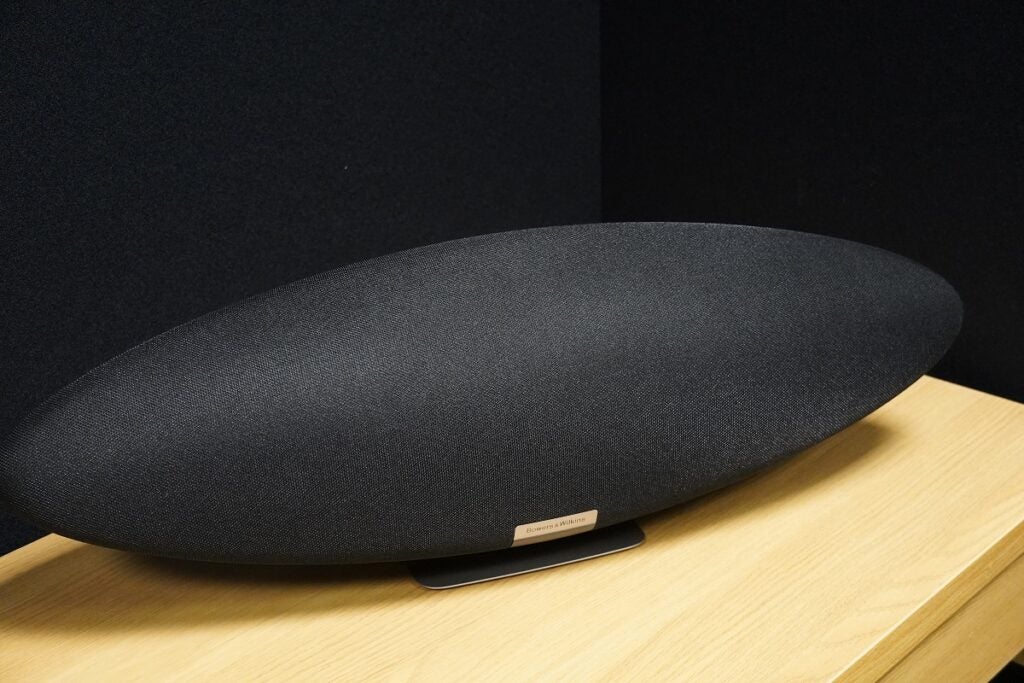
Bowers and Wilkins Zeppelin
Best sounding smart speaker
Pros
- Precise sound
- Plenty of streaming options
- Striking design
- Nice app
Cons
- Rather large to accommodate
- No Chromecast
- Stereo ambitions overstated
The Zeppelin range of wireless speakers from Bowers & Wilkins goes back all the way to the age of the iPod dock, and this latest iteration embraces music streaming and voice assistance.
The Zeppelin carries on the the airship looks, its contoured curves create a distinctive silhouette with the fabric covering embellishing the speaker’s premium feel. The FEA optimised enclosure offers rigidity and at a width of 650mm it is not what we’d call compact, a speaker that needs plenty of space to operate. For design fans there’s a choice of either midnight grey or pearl grey finishes, both of which look great.
In terms of connectivity there’s AirPlay 2 for iOS devices, and in the B&W Music app there’s an array of streaming services such as Spotify, Deezer and Tidal to directly play music to the speaker. We found it offered a pleasing amount on convenience, collating music services into one app, and there’s a simple EQ adjustment available to tweak the sound. Alexa is the choice for voice assistance and we found her responsive to requests, able to pick up our voice from across the room when music was playing.
The Zeppelin’s enclosure has a pair of 25mm double-dome tweeters, two 90mm FST drivers deal for the mid-range while low frequencies are handled by a 6-inch subwoofer. During our time with the Zeppelin, we found it was a speaker that delivered a precise sound, with a crisp mid-range, punchy bass and a top end that feature plenty of clarity that edges out the similarly priced Braun LE02 in our view. Vocals are crisp and clear and there’s a good sense of dynamism on show, its sound can fill a medium sized room comfortably. Its claims of stereo imaging are overstated, with not much of a distinct left or right image apparent within the Zeppelin’s soundstage.
Reviewer: Kob Monney
Full review: Bowers & Wilkins Zeppelin

Apple HomePod Mini
Best Apple smart speaker
Pros
- Sound incredible
- Very small
- Great price
- Decent voice control
Cons
- Captive cable
- Very reliant on Apple services (for now)
The original HomePod was a great smart speaker for those immersed within the iOS ecosystem, and the smaller HomePod Mini packs much of what we liked with the bigger HomePod at an affordable price.
It builds on the good looks by using the same fabric covering as the original, but swaps out the cylindrical shape for something more akin to a ball. Its overall size makes it one of the smallest smart speakers, tinier than the Amazon Echo Dot (4th Generation). With a weight of just 345g, we found it easy to place around the home, as the Mini doesn’t take up much space. We did find it disappointing that Apple still ships the speaker with a captive cable. If it gets damaged then the whole speaker needs to be sent back.
Setup is easy as long as you have an iOS device to get things started. On the feature front there’s a lot to unpack, Siri mostly responded to us with clear answers and better phrasing than she has in the past, while smart home control has also become notably better with iOS 15. That’s led to HomeKit integration being improved, even if the service is still missing native support from the likes of Nest and Ring (a HomeBridge is needed to connect).
During testing, the HomePod Mini’s audio was much better than we expected from such a small unit. Apple has crammed a full range driver inside its tiny dimensions, along with two bass radiators and an acoustic waveguide that spreads audio into the room. We observed plenty of bass alongside a good detail levels that bucked our expectation of how smaller speakers often sound. The scope in terms of volume is impressive, and at full whack the Mini can almost be too loud for some rooms.
Reviewer: David Ludlow
Full review: Apple HomePod Mini

Audio Pro G10
Best Google smart speaker
Pros
- Great sound
- Built-in smarts
- Handsome looks
- Multi-room support
Cons
- More expensive than previous model
- Chromecast downsamples Tidal Master tracks
If you prefer the Google smart ecosystem but aren’t too interested in the Nest Audio range of wireless speakers, then the Audio Pro G10 is the speaker we’d recommend as the better-sounding option.
The A10 sports the same driver setup as the A10, but Audio Pro have found performance gains, sounding fuller and more expressive with vocals. Bass is more assertively described with the G10 than it was on the A10, the mid-range is handled with clarity and treble notes are defined with confidence.
Where previously you could connect to Audio Pro’s own multi-room setup with the A10, the G10 ditches that for connectivity with Google. That means this speaker can’t connect to other Audio Pro models within the Audio Pro app. Google assistance does bring Google Home (for multi-room) and Chromecast (for casting to the speaker from streaming services), all of which we found very easy to use. iOS users get some love with AirPlay 2 and there’s Bluetooth 5 as well. The 3.5mm jack also allows for plugging in a portable music speaker, if you so choose.
The shape of the speaker doesn’t lend itself to a wide soundstage, but nothing sounds too cramped or congested and we found performance to be consistent across AirPlay 2, Chromecast and Bluetooth inputs, with Chromecast offering the best performance. Casting still doesn’t support MQA with Tidal Master tracks, so Hi-Res Audio is often downsampled to CD quality.
The G10 looks virtually identical to its predecessor with its modern and minimalist looks that come in a choice of two different shades of grey to suit bright or darker environments. Some changes have been to onboard operation, with the four preset buttons replaced with buttons for muting the microphone, Google Assistant and input selection for a greater amount of control over the speaker.
Reviewer: Kob Monney
Full review: Audio Pro G10

Amazon Echo (4th Generation)
Best Alexa smart speaker
Pros
- Improved sound
- Same price as the previous model
- Zigbee hub
- Looks fantastic
Cons
- Zigbee hub not compatible with all devices
If you’re after a smart speaker that offers impressive audio quality, Zigbee and Matter compatibility plus easy access to the Amazon ecosystem, then the Amazon Echo (4th Generation) is an ideal choice.
Featuring a spherical design, which is shorter and wider than its predecessors, the Amazon Echo 4th Generation is designed to blend into your home rather than stand out. The status ring light has also been moved down to the bottom of the speaker, which still gets your attention for notifications but with a less intrusive and distracting light than previous Echos.
Unsurprisingly the Echo 4th Generation features Amazon’s voice assistant, Alexa, which remains one of the best voice assistants for smart home devices, especially thanks to Alexa Routines, which can perform multiple actions at the same time each day. For example, you can set a routine to simultaneously turn on your lamp, set your thermostat and read out the headlines in the morning.
Not only can you control your smart lights and central heating using just your voice but Alexa also boasts numerous skills that can make your life easier, including setting timers, creating calendar events and checking traffic updates.
You’ll also find the Zigbee hub included on the Echo 4th Generation which is particularly useful if you want to control all your smart home devices from your Echo. With the Zigbee hub you can add non-Amazon smart home devices to your Alexa network without having to use additional hubs. The Echo should also discover your devices automatically too, taking the pain out of laborious set-ups.
It’s worth noting that not all third-party Zigbee devices are compatible so do check before you buy.
Although a small and compact device, there are two 0.8-inch tweeters and a 3-inch woofer housed inside, which is one more tweeter than the previous Echo. This results in more detailed sound quality with extra clarity in audio.
Amazon’s Echo 4th Generation is an impressive upgrade from previous generations. Not only does it boast upgraded audio but the built-in Zigbee hub and Alexa support means it’s easy to use and to integrate into your home.
Reviewer: David Ludlow
Full Review: Amazon Echo (4th Gen)

Apple HomePod 2
Best sounding Apple smart speaker
Pros
- Fantastic sound and strong Spatial Audio representation
- Removable power cable
- Small and compact
Cons
- Strangely slow in some situations
- You need to be an Apple user to get the most out of it
- Not overly different from the previous version
After being discontinued just when it was starting to hit its stride, Apple has brought back the full-size HomePod smart speaker for another go-around, keeping the same design and similarly high asking price at $299 / £299.
The design is near-identical to the original model with a few useful tweaks. One of those changes is the change from a captive cable to one that can be disconnected and swapped out, very useful if it ever gets damaged. The screen on top is bigger than before as well, although we found it doesn’t do much other than pulse when playing music.
It’s a speaker that perhaps looks bigger than it actually is, covered in a soft mesh fabric that blends nicely into softer environments. It is a heavy speaker at 2.3kg, but unless you’re moving it about this isn’t likely to be a great issue.
As usual with Apple devices, the HomePod 2 works best in an Apple ecosystem. There’s still no Bluetooth compatibility to connect to other devices, though in terms of smart support we found the HomePod 2 to be an improvement with Matter compatibility that can link devices from the likes of Apple, Amazon and Google together in one ecosystem. Siri works well to identify commands, though frustratingly, Apple still restricts which music streaming service is set as default, so there’s no means of adding Spotify and controlling it via Siri.
On better terms is the actual sound quality from the speaker. Though our reviewer found its frequency response to be bass heavy, it produces great audio for its size, with clear and crisp vocals along with a nice warm to how it handles low frequencies that hits harder than the Sonos One. It’s with spatial and Dolby Atmos audio that we found the HomePod 2 very impressive, creating a sense of depth and separation between instruments and vocals to provide a great sense of 3D immersion.
A purchase of the Apple HomePod 2 comes down to whether you’re a big Apple user or not, in our opinion. If you are, then the HomePod 2 is the best smart speaker for you.
Reviewer: Max Parker
Full Review: Apple HomePod 2

Sonos One (Gen 2)
Best multi-room smart speaker
Pros
- Great sound
- Small and convenient
- Proper Alexa integration
- Supports Google Assistant
Cons
- Lacking some punch in the bass department
The Sonos One (Gen 2) is one of the best sounding smart speakers below $200 / £200, with an audio performance we found offered a balanced presentation with solid mids and impactful bass that showcased good depth and extension. Compared to the similarly priced Denon Home 150 and the Sonos doesn’t carry as much bass, but it is a more nuanced and detailed performer.
In addition, the soundstage it offered proved wide for a speaker of its size, with enough volume to fill a room. For anyone who’s owned a Sonos Play:1, the audio signature will sound similar, but this comes as no surprise as both speakers feature the same driver configuration.
The One is a capable smart speaker with hands-free control via Google Assistant and Amazon Alexa. We found the integration good, with easy control for media playback and answering questions. Both assistants offer a similar feature set, such as changing the volume of any music, or playing music from a preferred music streaming service.
Control can also be done through the Sonos S2 app. The layout here proved to be functional and clean, making it easy to find our favourite tunes and there’s a vast selection of streaming apps to enjoy, a list that includes Tidal, Amazon Music, TuneIn and Spotify, as well as any music you’ve got saved on your device locally. There’s also support for AirPlay 2 for iOS devices, as well as the ability to connect up to other Sonos speakers such as the Move with Sonos multi-room connectivity.
Compared to older Play:1, the 2nd gen One has a more minimalist design, compact enough to in a cabinet or be placed by a bedside table; the swap from physical buttons to responsive touch sensitive buttons makes for a slicker interaction with the unit. There are a number of very good smart speakers at this price, but the Sonos’ overall performance means it edges out other contenders.
Reviewer: Ced Yuen
Full review: Sonos One Gen 2

Amazon Echo Dot (5th generation)
Best budget smart speaker
Pros
- Improved audio
- Looks great
- Improved tap controls
Cons
- No 3.5mm audio output
Previously, Echo Dot smart speakers have felt like cheap ways to get Alexa control and replies around the house, but they’re weren’t particularly good for entertainment. The Amazon Echo Dot (5th Generation) changes that, and this model houses a larger 1.73-inch front firing speaker.
That’s significantly larger than the 1.6-inch speaker on the previous generation model. The difference is stark, with the 5th generation model sounding much more imposing and impressive. Bass is now rendered with a degree of skill, and the speaker delivers more poise. Sure, the high end can be a bit harsh, and more subtle detail is lost, but the Echo Dot has gone from a no-frills speaker to a decent budget choice that can handle music.
Otherwise, it’s business as normal. The Echo Dot apes the design of the larger Echo, although here the spherical speaker is smaller, around the size of a baseball. And, there’s a choice of three options that all use the same base technology: the Echo Dot (5h generation); Echo Dot with Clock (5th generation), which adds a smart LCD screen for showing the time and more; and the Echo Dot Kids (5th generation), which has two animal designs and comes with a year of Kids+.
Other speakers on this list will deliver a better audio experience, but if you want a cheaper smart speaker that can turn its hand to anything, this is the one to buy.
Reviewer: David Ludlow
Full Review: Amazon Echo (5th Gen)

B&O Beosound Balance
Best premium smart speaker
Pros
- Extravagant design
- Big room-filling sound
- Google Assistant smarts
- Plenty of app customisation
Cons
- Extravagant price
- Compromised Tidal Masters performance with Chromecast
- Not the most dynamic performance
The B&O Beosound Balance is an ornate looking smart speaker that comes with a high price tag to match.
As expected from a B&O product, the Balance has an immensely minimalist design, complete with a natural wood base and speaker housing wrapped in knitted fabric that feels lovely to touch. Inside is space for seven drivers with two 2-inch full range drivers, two opposing 5.25-inch bass drivers and one ¾ tweeter for high frequencies in the front of the speaker, while around the back are two 3-inch full range drivers that act as ‘sound enhancers’.
It’s a hefty speaker at 7.2kg, and one we found best to set down and leave once a good place has been found as carting the speaker around can be rather tiresome. There’s a choice of Natural Oak, Black Oak, Nordic Ice and White Marble to fit your décor.
The Balance comes in two version, one with Google Assistant and one without (both, strangely, cost the same). Google support brings built-in Chromecast, but the likes of AirPlay 2, Spotify Connect and Bluetooth 5 are available to increase the number of ways to send audio to the speaker. If you have deep enough pockets, a stereo pair of Balance speakers can be created in Google Home for a bigger audio performance.
The B&O app is one we found simply laid out and easy to operate, offering the means to adjust the direction of the speaker’s sound, control playback and change EQ settings in a fairly intuitive manner.
It’s no real surprise the audio is good, as we found the presentation to be clear, detailed and natural in tone. While the soundstage is not be the widest, predictable given its conical shape, it at least is consistent from all angles when in its 360 mode.
We would recommend placing the speaker against a wall to firm up the sound, but overall this is a high quality speaker, that performs well across a range of music genres. The volume scaling could use some more finesse, sliding from low to high can result in sudden jumps in loudness that aren’t welcome.
Reviewer: Kob Monney
Full review: Bang & Olufsen Beosound Balance
We also considered…
We’ve reviewed
See all reviewsFAQs
You’ll find that Amazon Alexa and Google Assistant are the most commonly supported digital assistants on speakers. If you’re within the Apple ecosystem then Siri is the assistant of choice.
You could disable digital assistants through the speaker’s companion app if that’s supported. Many allow for the microphone to be turned off to disable the assistant.










